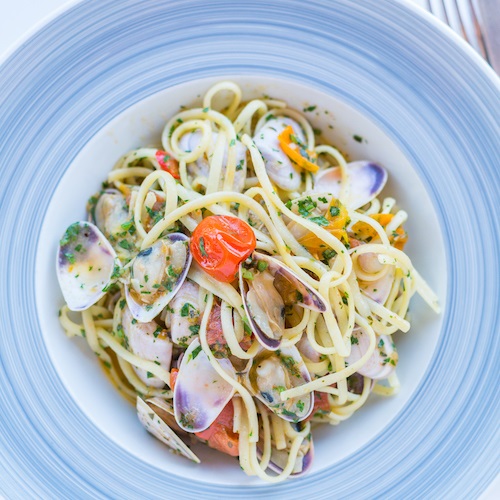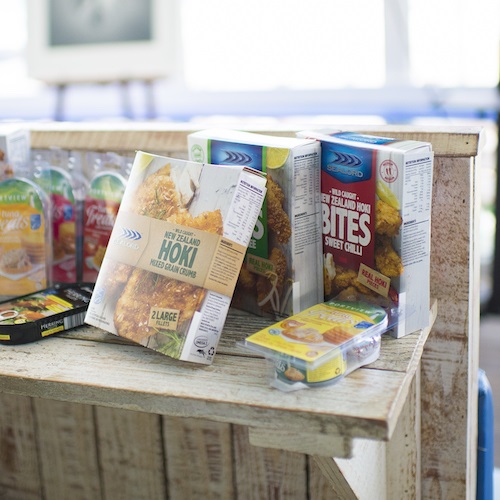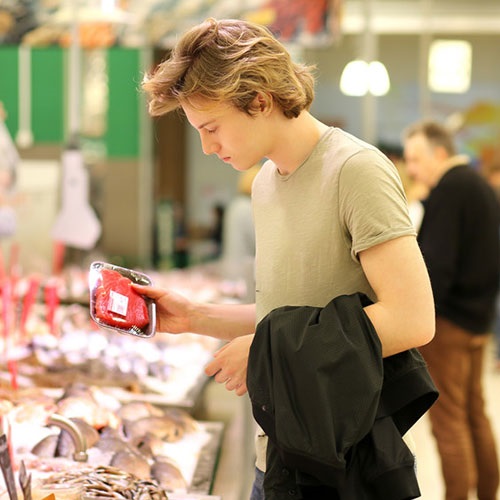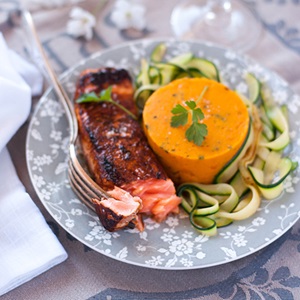Sustainable salmon is widely available in Australia and New Zealand. Just look for salmon products with the blue fish tick such as John West and Safcol tinned salmon.
What is salmon?
There are seven known species of Pacific salmon found in North American and Asian waters, and one species of Atlantic salmon, which is mainly farmed. Each species has slightly different characteristics but typically salmon has firm, succulent flesh, and is red to orange in colour. This is from a diet rich in shellfish and high oil content. It is highly valued in the human diet due to its nutritional value, providing essential omega-3 fatty acids, high-quality protein and a variety of vitamins and minerals.Check out our sustainable salmon recipes.

Salmon facts
- The term ‘salmon’ derives from the Latin word ‘salmo,’ which is said to have originated from ‘salire’, which means ‘to leap’. This seems fitting considering salmon can jump up to two metres to cross obstacles in rivers.
- The scientific name for Pacific salmon is ‘Oncorhynchus’, which derives from the Greek words ‘onkos’ (hook) and ‘rynchos’ (nose). This refers to the ‘kype,’ the hooked jaw that develops in males when they compete for females during mating season.
How do I know if salmon is sustainable?
Salmon carrying the MSC blue fish tick is certified sustainable. MSC labelled salmon comes from a fishery that has been independently certified to the MSC Fisheries Standard. Companies using the label all along the supply chain have been assessed to ensure products can be traced back to an MSC certified fishery. There are a variety of salmon products carrying the MSC blue fish tick in stores across Australia and New Zealand.
About salmon fishing
Wild Alaskan salmon are harvested by nets (drift and set gillnets, purse seine), trolling and fishwheels. Trolling is fishing by drawing a baited line or lure behind a boat. A fishwheel operates much like a water-powered mill wheel: fish travelling upstream are caught in baskets on the wheel, then transferred into a holding tank.Is salmon farming sustainable?
According to the Aquaculture Stewardship Council, "Salmon farmers face a number of issues in bringing their seafood to market. With ASC certification, farmers evidence their contributions to responsible labour practices, disease management, and ecosystem conservation."
Where can I buy sustainable salmon?

You'll find a wide range of MSC certified wild Alaskan salmon with the blue fish tick in all major supermarkets in Australia and New Zealand.
- Canned pink and red salmon: John West, Safcol, Woolworths own brand, Coles own brand, ALDI own brand
- Salmon slices: John West
- Chilled salmon fillets: Agrios exclusively at Coles
- Microwave salmon fillets: John West
- Frozen salmon fillets: I&J
Find out more about where to buy sustainable seafood.
Salmon recipes
Enjoy these delicious salmon recipes created by top chefs.Explore more sustainable fish to eat
Find more sustainable seafood species that are MSC certified in Australia and New Zealand.
Explore the sustainable seafood guide.


Sustainable seafood recipes
Chefs and seafood lovers from around the world share quick and tasty ways of cooking MSC certified seafood.

10 reasons to choose the blue fish tick
Choose seafood which helps to protect oceans, livelihoods and fish for the future.

Buy sustainable seafood
Where to find the blue fish tick at supermarkets, fish shops and restaurants.







